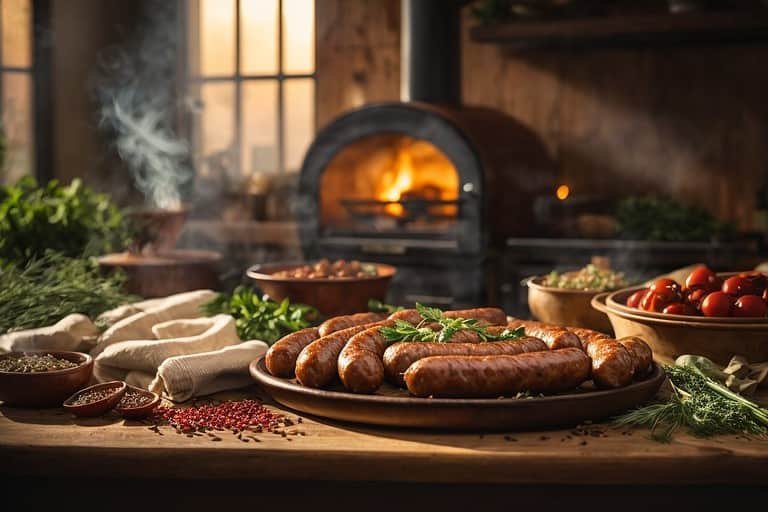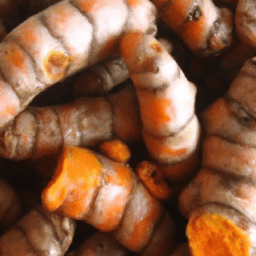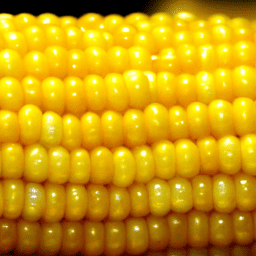Cooking Basics
Whether you’re a seasoned chef or a novice in the kitchen, understanding cooking basics is essential. From mastering simple techniques to knowing the right ingredients to use, this article will provide you with valuable tips and tricks to enhance your culinary skills. Whether you’re looking to impress your dinner guests or simply looking to prepare a delicious meal for yourself, this article will equip you with the knowledge you need to become a confident and successful cook. So, grab your apron and get ready to embark on a flavorful journey of cooking mastery.
Understanding Food Safety
Importance of food safety
Food safety is of utmost importance when it comes to cooking and preparing meals. By ensuring proper food safety practices, you can protect yourself and others from foodborne illnesses. These illnesses can range from mild discomfort to serious health complications, so it’s crucial to pay attention to food safety guidelines.
Proper storage of food
Storing food properly is essential in maintaining its freshness and preventing bacterial growth. It is crucial to store perishable items, such as meat, fish, and dairy products, in the refrigerator at temperatures below 40 degrees Fahrenheit (4 degrees Celsius). This inhibits the growth of harmful bacteria that thrive in warmer temperatures. Additionally, make sure to keep raw meats separate from other foods to avoid cross-contamination.
Correct temperatures for cooking
Cooking food at the correct temperatures is vital for both taste and food safety. Using a food thermometer can help ensure that perishable foods, such as poultry, beef, and seafood, are cooked to the appropriate internal temperature and are safe to consume. Avoid undercooking as it can leave harmful bacteria alive, and overcooking can result in dry and tasteless dishes.
Avoiding cross-contamination
Cross-contamination occurs when bacteria from one food item transfer to another, potentially leading to foodborne illnesses. To avoid cross-contamination, use separate cutting boards and utensils for raw meats, vegetables, and other food items. Also, make sure to wash your hands thoroughly after handling raw meats or other potentially contaminated ingredients. Following these simple steps significantly reduces the risk of cross-contamination in the kitchen.
Kitchen Equipment Essentials
Understanding different kitchen tools
Being familiar with various kitchen tools is essential for cooking efficiently and effectively. From knives to pots and pans, each tool serves a specific purpose. Knives come in various shapes and sizes, each designed for different tasks, such as slicing, dicing, or chopping. Pots and pans should be selected based on the type of cooking, with non-stick pans being great for sautéing and stainless steel pans for searing and browning.
How to use a knife
Using a knife properly is a fundamental skill in the kitchen. Start by holding the knife with a firm grip, placing your thumb and index finger on the blade’s opposite side for control. Use a rocking motion while chopping or slicing, keeping the tip of the knife on the cutting board for stability. Practice and proper technique will help you become more comfortable and efficient with a knife.
Care and maintenance of kitchen tools
To maximize the lifespan and performance of your kitchen tools, proper care and maintenance are essential. Always hand wash your knives, as putting them in the dishwasher can dull the blades. Regularly sharpen your knives to maintain their sharpness. Additionally, follow the care instructions for your pots and pans to prevent warping or damage.
Appropriate kitchen appliances for different recipes
Having the right kitchen appliances makes cooking more convenient and efficient. Depending on the recipe, you may need appliances like blenders, food processors, stand mixers, or slow cookers. understanding when and how to use these appliances will enhance your cooking experience and broaden your culinary possibilities.
Basic Cooking Techniques
Roasting and baking
Roasting and baking are dry-heat cooking methods that utilize the oven’s heat to cook food. Roasting typically refers to cooking meat or vegetables uncovered at higher temperatures, allowing the exterior to brown and develop a delicious crust. Baking, on the other hand, is used for desserts, bread, and casseroles, usually involving batter or dough.
Broiling
Broiling is a cooking method that involves exposing food to direct heat from the oven’s top element. It quickly cooks and browns the top layer of the food, such as steaks, fish fillets, or vegetables. To properly broil, preheat the broiler, place the food on a broiler pan, and position it close to the heat source. Keep a close eye on the food to avoid burning.
Grilling
Grilling is a popular cooking method, especially during the summer months. It involves cooking food directly over high heat to achieve a charred and smoky flavor. Grilling is perfect for meats, fish, vegetables, and even fruits. Make sure to preheat the grill, oil the grate to prevent sticking, and monitor the cooking time for the best results.
Steaming
Steaming is a gentle cooking method that preserves the natural flavors, colors, and nutrients of food. It involves cooking food with steam generated by boiling water. Steaming is ideal for delicate foods like seafood, vegetables, and dumplings. Use a steamer basket or steamer pot to keep the food above the boiling water while allowing the steam to evenly cook it.
Sautéing
Sautéing is a quick cooking method that involves cooking food in a small amount of fat over high heat. It’s perfect for ingredients that are small in size, like diced vegetables or thin cuts of meat. To sauté effectively, use a wide skillet or frying pan, preheat the pan, and constantly agitate the food to prevent burning. The result is a flavorful and tender dish.
Understanding Ingredients
Fresh vs processed foods
Differentiating between fresh and processed foods is crucial in understanding the quality and nutritional value of the ingredients you use. Fresh foods are those that have not undergone significant processing, preserving their natural form and nutrients. On the other hand, processed foods have undergone various levels of preparation, often involving additives, preservatives, and flavorings. Strive to incorporate fresh ingredients into your cooking for optimal taste and health benefits.
The importance of seasonality
Choosing seasonal ingredients is a great way to enhance the flavor and quality of your dishes. Seasonal ingredients are typically at their peak freshness, meaning they are packed with flavor and nutrients. They are also more readily available and often more affordable. When planning your meals, consider incorporating seasonal produce to make the most of your cooking.
Selecting high-quality meats and seafood
Choosing high-quality meats and seafood is essential for delicious and safe meals. Look for fresh, firm cuts of meat with vibrant colors and minimal blemishes. When it comes to seafood, opt for products that are sustainably sourced and have been handled and stored properly. High-quality meats and seafood will elevate the taste of your dishes and ensure food safety.
Understanding herbs and spices
Herbs and spices add depth and flavor to your dishes, transforming them from ordinary to extraordinary. Understanding the characteristics and uses of various herbs and spices is key to creating well-balanced and flavorful meals. Experiment with different combinations to discover your favorite flavor profiles and enhance your culinary skills.
Meal Planning and Preparation
Planning meals for the week
Meal planning is a powerful tool for saving time, money, and stress in the kitchen. By planning your meals for the week, you can streamline your grocery shopping, reduce food waste, and ensure a variety of nutritious and delicious meals. Start by identifying your favorite recipes, considering dietary preferences and restrictions, and then create a shopping list accordingly.
Effective grocery shopping
effective grocery shopping involves strategic planning and smart choices. Before heading to the grocery store, make a list based on your meal plan and prioritize essential ingredients. Explore different stores or farmers markets to find the best quality and prices for your ingredients. To make healthier choices, shop the perimeter of the store, where fresh produce, meats, and dairy products are typically located.
Prep work before cooking
Preparation is key to smooth and efficient cooking. Before you start cooking, gather all the necessary ingredients and equipment. Take the time to wash, chop, and measure ingredients, ensuring they are ready to be used. Prepping in advance allows you to focus on the cooking process and ensures a stress-free and enjoyable experience in the kitchen.
Storing leftovers
Storing leftovers properly is essential in preventing food waste and maintaining their quality. When storing, make sure to divide them into smaller portions for easier reheating. Refrigerate leftovers promptly, within two hours of cooking, and use airtight containers to prevent moisture loss and contamination. Label and date your leftovers to keep track of their freshness, and consume them within a safe timeframe.
Cooking Healthy Meals
Substituting unhealthy ingredients
Cooking healthy meals often involves making smart ingredient substitutions. Replace high-fat ingredients with healthier alternatives, such as using Greek yogurt instead of sour cream or olive oil instead of butter. Substitute refined grains with whole grains for added fiber and nutrients. Get creative with your substitutions and experiment with different flavors and textures.
Portion control
Portion control is crucial for maintaining a healthy balance in your meals. Be mindful of the recommended serving sizes for different food groups and try to stick to them. Using smaller plates and bowls can help visually control portion sizes. Also, listen to your body’s hunger and fullness cues to avoid overeating.
Balancing nutrition in meals
Creating well-balanced meals involves incorporating a variety of macronutrients and micronutrients. Aim to include lean proteins, whole grains, fruits, vegetables, and healthy fats in each meal. Balancing these components ensures you are getting the necessary nutrients to support your overall health and well-being.
Cooking for dietary restrictions
Cooking for dietary restrictions, such as allergies or specific dietary choices, requires careful attention to ingredient selection and preparation methods. Read food labels carefully to avoid potential allergens, and be mindful of cross-contamination risks. Experiment with alternative ingredients and cooking techniques to achieve delicious meals that meet specific dietary needs.
Recipe Reading and Understanding
How to read a recipe
Reading a recipe is the first step in creating a successful dish. Start by carefully reviewing the ingredient list and familiarize yourself with the required measurements and amounts. Read the instructions thoroughly, paying attention to the cooking time and any specific techniques or equipment required. Make note of any preparation steps that need to be completed in advance.
Understanding cooking terms
Understanding common cooking terms is essential for following a recipe accurately and achieving the desired results. Familiarize yourself with terms such as sauté, simmer, dice, and whisk. If you come across an unfamiliar term, don’t hesitate to look it up or consult a cooking reference to ensure you understand the technique or action required.
Adapting recipes
Adapting recipes allows you to put your own spin on a dish or modify it based on personal preferences or ingredient availability. Experiment with different flavor combinations, spices, or cooking methods to make the recipe your own. Keep in mind that certain modifications, such as adjusting baking times or ingredient ratios, may require careful consideration to maintain the dish’s integrity.
Scaling recipes
Scaling a recipe allows you to adjust the quantity of ingredients to accommodate larger or smaller crowds. To scale a recipe, multiply or divide each ingredient’s quantities while maintaining the same ratios. Consider the cooking time and potential adjustments needed for different batch sizes. Scaling recipes successfully comes with practice and a solid understanding of ingredient proportions.
Baking Basics
Understanding the baking process
Baking involves using dry heat in an oven to cook food, typically resulting in a final product with a tender texture and golden crust. It is a science that requires precision in ingredient measurements, oven temperature, and mixing techniques. Understanding the baking process, including the roles of ingredients like flour, sugar, and leaveners, will help you achieve consistent and delicious results.
The importance of measuring
Accurate measuring is crucial in baking, as small variations in ingredient quantities can significantly impact the final product. Use measuring cups and spoons for dry ingredients and a kitchen scale for precise measurements of liquids or weight-based ingredients. Level off dry ingredients with a knife to ensure consistency.
Common baking ingredients
Baking relies on a variety of staple ingredients, including flour, sugar, eggs, butter, and leaveners. Flour provides structure, while sugar adds sweetness and aids in browning. Eggs contribute moisture, structure, and richness, while butter adds flavor and tenderness. Leaveners, such as baking powder or yeast, help the dough or batter rise, resulting in a light and airy texture.
Troubleshooting baking issues
Even experienced bakers encounter challenges in the kitchen. Troubleshooting baking issues requires patience and understanding of the potential culprits. Common issues include underbaked or overbaked goods, collapsed cakes, or dense textures. Factors such as oven temperature, ingredient ratios, or mixing techniques can contribute to these problems. With practice and careful evaluation, you can overcome baking challenges and create beautiful and delicious treats.
International Cuisines
Exploring different cultural cuisines
Exploring international cuisines allows you to broaden your culinary horizons and experience diverse flavors and cooking techniques. From Italian to Thai, each cuisine offers unique ingredients, spices, and cooking methods. Expand your taste buds by exploring recipes, trying new ingredients, and immersing yourself in the rich culinary traditions of different cultures.
Understanding unique ingredients
International cuisines often incorporate unique ingredients that might be unfamiliar to your kitchen. Take the time to research and understand these ingredients before using them in your cooking. Learn about their flavor profiles, uses, and proper storage and preparation methods. This knowledge will help you confidently incorporate these ingredients into your dishes.
Special cooking techniques
Different cultural cuisines employ specific cooking techniques that contribute to their distinct flavors and textures. From stir-frying in Chinese cuisine to slow-roasting in Mediterranean cuisine, understanding and mastering these techniques will allow you to recreate authentic and delicious dishes. Explore recipes and resources specific to each cuisine to enhance your culinary skills.
Adapting international recipes
Adapting international recipes to suit your taste preferences or ingredient availability is a creative and exciting endeavor. Be open to experimenting with substitutes or modifications based on local ingredients or personal dietary choices. Strive to maintain the overall spirit and essence of the dish while infusing some of your unique touches.
Presentation and Serving
The importance of presentation
Food presentation plays a significant role in enhancing the dining experience. Aesthetically pleasing dishes are more appealing and can elevate the overall enjoyment of a meal. Consider the use of colors, textures, and arrangement when plating your dishes. Garnishes, sauces, and edible decorations can also add a finishing touch to make your creation visually impressive.
Serving sizes and portions
Proper serving sizes and portions are essential for a well-balanced and satisfying meal. Consider the nutritional needs of your diners and serve appropriate portions accordingly. Using smaller plates or bowls can help control portion sizes. Pay attention to the balance of proteins, carbohydrates, and vegetables to ensure a nutritious and satisfying meal.
Plating techniques
Plating techniques involve arranging the food on the plate in an appealing and balanced manner. Use the whole plate as the canvas and consider the natural flow of the dish. Experiment with different placement and layering techniques to create visually pleasing presentations. Remember that less is often more, and negative space can contribute to an elegant and refined look.
Decorating and garnishing
Decorating and garnishing your dishes with thoughtful accents adds an extra element of visual appeal. Fresh herbs, edible flowers, sauces, or drizzles can provide pops of color and enhance the dish’s flavor profile. Consider using complementary ingredients or contrasting textures to create visually stunning plates that showcase your culinary skills.
As you dive into the world of cooking, understanding these cooking basics will set a strong foundation for your culinary journey. Embrace the learning process, experiment with flavors, and enjoy the art of preparing delicious meals that nourish both the body and soul. With time and practice, you’ll develop your skills and become a confident and creative cook. Happy cooking!







